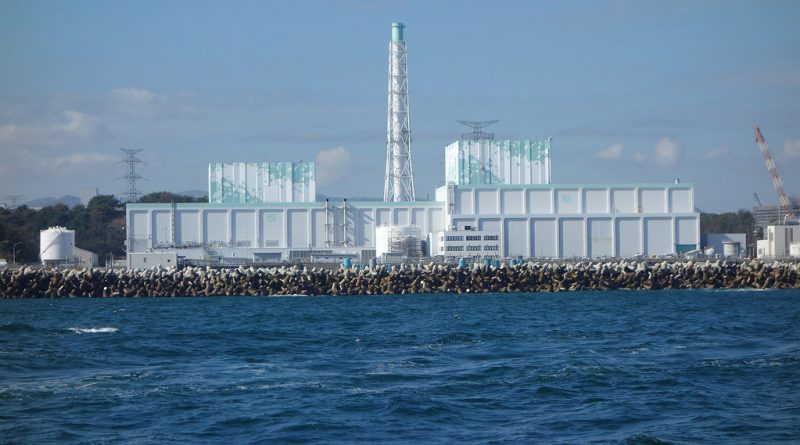Japan to Dump Water from Fukushima into the Pacific Ocean
Charleigh Stone
Staff Writer
The Tokyo Electric Power Company (TEPCO) is on track to release over a million tons of contaminated water from the Fukushima nuclear plant into the Pacific Ocean as part of its cleanup efforts. The first release is anticipated to begin in 2023, with the total process expecting to last over a decade. The move comes as water continues to accumulate, despite the plant being decommissioned following a massive earthquake and tsunami in 2011. The infamous incident damaged the plant’s nuclear reactors and cooling system, forcing more than 150,000 people to evacuate the area. Amid increasing water levels over the years since, the plant’s 1.37 million ton-capacity is expected to be full by late 2022, forcing TEPCO into action, reports CNBC.
The Fukushima nuclear meltdown put a hold on plans to scale up nuclear power to address climate change, energy poverty, and economic development. In addition, concerns over nuclear safety led several countries to opt for phasing out nuclear power altogether, reports the International Atomic Energy Agency (IAEA). In the decade since the incident, Fukushima has been undergoing a cold shutdown wherein cooling and preventing the release of radioactive materials became the forefront of cleanup efforts.
The water, which is a mixture of fluids used to cool the core of nuclear reactors, is expected to be filtered through a complex treatment system designed to reduce dangerous levels of radionuclides to trace amounts. The treatment, however, cannot separate tritium, a radioactive isotope of hydrogen. Experts consider tritium to be harmless in small amounts and internationally accepted levels will be achieved by diluting the tainted water before pumping it into the ocean, Reuters reports.
Scientists have said that with dilution, the treated water poses no scientifically detectable risk. Since tritium has a half-life of around 12 years, it will only take a matter of decades to disappear from the environment. However, radiation from tritium can still be ingested, albeit the scientific consensus is that it does not pose a threat to human health, according to BBC News.
According to The Economist, both the United States and the IAEA have endorsed this approach, noting it is “both technically feasible and in line with international practice.” However, while Japanese Prime Minster Yoshihide Suga has claimed that the decision is Japan’s most realistic option, the later has been met with fierce criticism from both domestic and international actors, reports VOA.
South Korea called the decision “utterly intolerable” and accused Japan of taking “unilateral action” without regard for its neighbors. China has also cited “grave concerns” and reserved the right to take further action if Japan continues without consulting the international community. According to CNBC, South Korean President Moon Jae-in has gone as far to call for officials to find ways of referring Japan’s move to the International Tribunal for the Law of the Seas.
Concerns have also been raised over the environmental impact of the decision; residents of Fukushima fear it will destroy the local fishing industry which is already suffering after a decade of self-imposed limits. Moreover, The New York Times reports that a national poll issued by The Asahi Shimbun found 55 percent of respondents opposed the water dump. Such criticism has been dismissed by Japan as unscientific, noting that releasing treated water into oceans is a routine practice among nuclear plants around the world.
The IAEA confirmed that releasing into the ocean is a disposal method utilized by other plants around the world. Moreover, a nuclear engineering professor, Brent Heuser, who spoke to CNBC, claimed the decision is “simply not a concern” and will have “zero environmental impact,” despite concerns from international environmental groups. Rather, Heuser suggests environmental focus remains on plastic pollution.
Photo courtesy of Petr Pavlicek / IAEA (Flickr)



